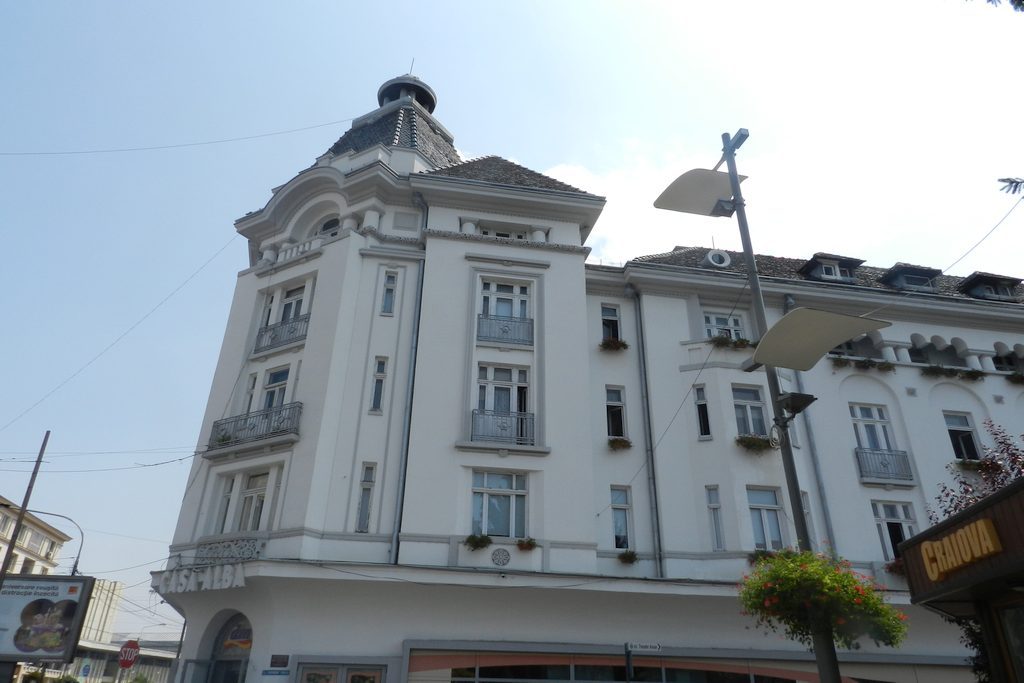

In the inter – war Craiova, between the years 1920 and 1920 there is built the so – called White House (on one of the sides of the central garden – English Park – executed in the style of a London square), according to the plans of the architect Constantin Iotzu.
The building represents the first building of blocks from Craiova, built, it was called the New Palace and it belonged to the Bank of Commerce, and the street was called the New Street. According to the project, the building was going to have 44 apartments destined to the functioning of the Bank of Commerce and to have an elevator.
Constantin Ioztu (born on the 28th of May 1884, Crușova, Macedonia – deceased on the 1st of August 1962, Bucharest) was a Romanian architect of Aromanian origin. He is one of the significant representatives of the architectural styles of Neo-Romanian. Between the years 1940 – 1944, he activated as a professor. He was, also, the dean of the Architecture School from Bucharest (being included in the period in Polytechnic School).
The White House was built by Giovanni Batista Peressutti, together with enterprising constructions of Carol Dalla Barba.
At the beginning of the XXth century, in a period in which, in Oltenia, in many crafts and occupations there stood out the foreign workers, Giovanni Batista Peressutti raised to a level of art the construction of civil buildings. Concentrating his intense activity of entrepreneur in constructions and managing to successfully inflect the modern functional requests and the representation in a special attention of the local architectural shapes in big works, Peressutti connected his names of one of the most heavy and known constructions from Craiova.
Giovanni Batista Peressutti was born on the 20th of September 1880 at Pinzano al Tagliamento (at 35 km from Udine), Italy. He attended the elementary studies at Finzano, post-elementary at San Daniele and Udine (Italy), following these studies achieving the engineer diploma in constructions. According to the doctorate studies of Paolo Tomasella, “The immigrants from Veneta and from Friuli from the economical and cultural life of the former Kingdom (1848 – 1948)”, Peressutti would have arrived in Romania at the end of the first decade of the XXth century, as seasonal worker. But, we consider the fact that Peressutti would have come for the first time in Craiova much earlier, in 1895 (according to the book of exercising the occupation on its own no. 045064, issued in 1930 by the Ministry of Work, Health and Social Protection – the Department of work – the service of placing, unemployment and migrations), coming back further on, after finalizing the studies, in order to work and for settling here together with his family. Although Craiova was already known for his powerful community of Italians, at the settling in the town of the Peressutti family also contributed the friendship between Giovanni Batista and the architect Petre Antonescu, whom he met in the period in which he was a student at Padova. In 1909, Antonescu entrusted to Peressutti the construction of the most important constructions projected by him, the Administrative Palace, today the Prefecture Dolj.
At Craiova, Peressutti (together with his Italian colleague Carlo Dalla Barba) created a real school of works in civil constructions with Italian masters of a high professionalism, also forming many builders or carpenters within the Romanian masters.
